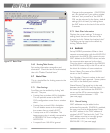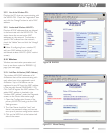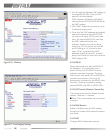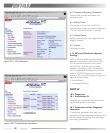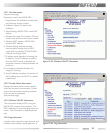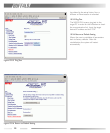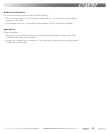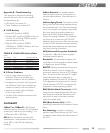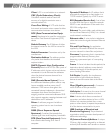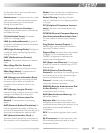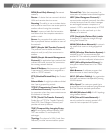
25
Appendix B - Troubleshooting
This appendix is divided into following
sections with each with it’s own specific
troubleshooting tips:
• LED Activity on section B.1.
• Other Problems on section B.2.
B.1 LED Activity
• Power LED should be GREEN
• Wireless LED should be GREEN if the line
is active. If is it blinking GREEN, wireless
communication is in use.
• Ethernet LED should be GREEN
(100Mbps) or AMBER (10Mbps) while the
communication is in use.
TABLE B.1 DIAG LED Activity Table
DIAG
LED Display Time Description/Action
Continuous Red Starting RAM Error
Red flash, 2 times Starting Flash ROM Error
Red flash, 3 times Starting problem in wired LAN side
Red flash, 4 times Starting problem in wireless LAN side
Red flash, 2 times After setup completed Flash ROM Error
Red flash, 2 times During firmware update Flash ROM Error
B. 2 Other Problems
• Out of range, which prevents the
AirStation Client from establishing a
wireless connection with the network.
• Configuration mismatch, which prevents
the AirStation Client from establishing a
wireless connection with the network
• Absence or conflict of the AirStation
Driver in the client PC.
• Conflict of the AirStation hardware with
another device.
GLOSSARY
10BaseT or 100BaseTx: 802.3 based
Ethernet network that uses UTP (Unshielded
twisted pair) cable and a star topology. 10 is
10 Mbps and 100 is 100 Mbps.
802.1x: The standard for wireless LAN
authentication used between an AP and a
client. 802.1x with EAP will initiate key
handling.
AdHoc Network: The wireless network
based on peer-to-peer for the duration of a
communications session. Also referred to as
Ad-Hoc.
Address Aging Period: The maximum time
during which the forwarding database entries
are considered valid. This value should be set
low if your network has regularly heavy traffic.
Each new device that sends a packet to a
device has its MAC address added to the
System Forwarding Database. The Database
can store up to a maximum of 8192 MAC
addresses at any one time. After the maximum
number of MAC addresses has been reached,
the earliest stored addresses are overwritten
with new, incoming information.
AES (Advanced Encryption Standard):
A symmetric 128bit block data encryption
technique used for security.
Bandwidth: The transmission capacity of a
computer, or a communication channel, stated
in Megabits per second (Mbps).
BOOTP: Software protocol used by servers.
When the client PC starts, it contacts the
server, and requests a new set of IP Configura-
tions. The server obtains the new IP Configu-
ration information from a static pool of
available addresses. The client PC will keep its
IP Configuration information until it is turned
off and restarted. BOOTP is not always fully
supported in newer operating systems.
BNC (British Naval Connector): A BNC
connector has a bayonet-type shell with two
small knobs on the female connector, which
twist-lock into slots in the male connector.
Used with coaxial cable.
BSS (Basic Service Set): An 802.11
networking framework that includes an Access
Point.
Bus Mastering: A system in which the
specified Input/Output device (e.g., NIC Card)
can perform tasks without the intervention of
the CPU.



